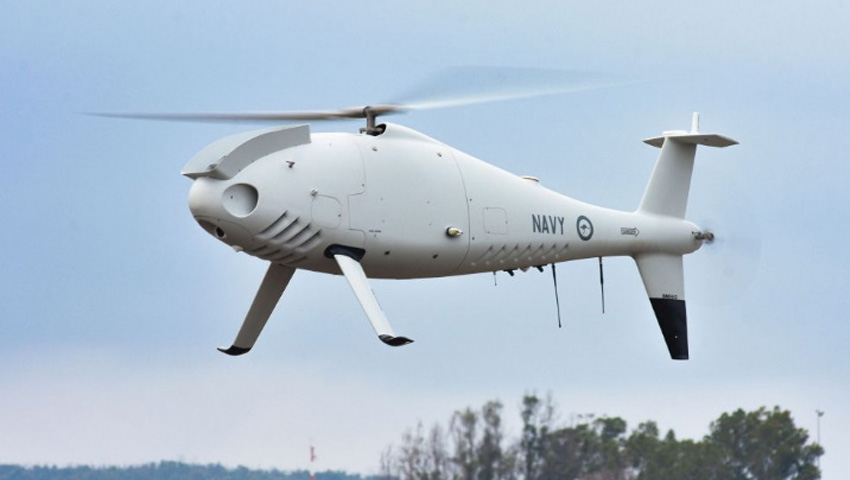The Royal Australian Navy’s next-generation of vertical take-off and landing UAS, the Schiebel-designed and built S2 heavy fuel engine variant of the Camcopter S-100, has successfully completed acceptance tests prior to entering service.
To continue reading the rest of this article, please log in.
Create free account to get unlimited news articles and more!
The Royal Australian Navy's pursuit of a next-generation vertical take-off and landing (VTOL) unmanned aerial system for introduction and operation from key fleet assets has taken a step closer to fruition following the successful completion of the S2 heavy fuel engine variant of the S-100 Camcopter currently in service with the Navy.
Austria-based Schiebel was awarded the initial contract to provide the VOTL UAS capability in 2017 as part of Navy Minor Project (NMP) 1942, which sought to procure a “proven” VTOL Maritime Tactical Unmanned Aircraft System – Interim Capability (MTUAS-IC) and associated engineering and logistics support for the Navy.
"A comprehensive series of test flight activities demonstrated both the endurance, and maximum take-off weight [MTOW] – with multiple payloads – providing the evidence and assurance that the Camcopter S-100 fulfils the requirements of the RAN," said the company in a statement.
Schiebel said the new S2 engine, which has been developed as a next-generation replacement for the current propulsion unit, increases the overall capability of the Camcopter S-100 system. The new lightweight heavy fuel engine is initially cleared for JP-5 (F-44) and Jet-A1 fuels with other fuel types set to be approved in future, it added.
The enhancements offered by the S2 engine, said Schiebel will "enable the RAN to continue to expand their test and evaluation program, examining advanced vertical take-off and landing UAS capabilities" ahead of the Australian Department of Defence's SEA 129 Phase 5 program.
SEA 129 Phase 5 aims to equip the RAN’s future Arafura and Hunter warship classes with embarked UAS capabilities.
The Camcopter S-100 improves the situational awareness of ship-borne operations substantially, and features a carbon fibre and titanium fuselage, has a maximum take-off weight of 200 kilograms and can carry a 34-kilogram payload of electro-optics and infrared sensors for up to 10 hours. It has a maximum speed of around 120 knots and is powered by a 55 horsepower (41 kilowatt) Diamond piston engine.
It also holds an impressive track record of supporting naval customers, with missions successfully completed on over 30 different ships on all of the world’s oceans, in every environment from the tropics to the Arctic.
The S-100 has a beyond-line-of-sight capability out to 200 kilometres, is able to fly completely autonomously and can be operated from a pilot control unit with missions planned and controlled via a simple point-and-click graphical user interface. High-definition payload imagery is transmitted to the control station in real time.
Stephen Kuper
Steve has an extensive career across government, defence industry and advocacy, having previously worked for cabinet ministers at both Federal and State levels.

 Login
Login








